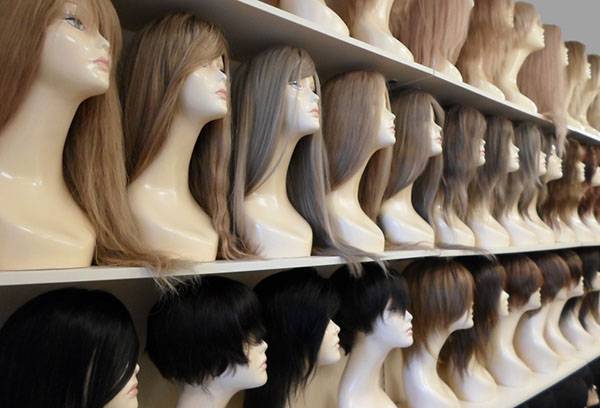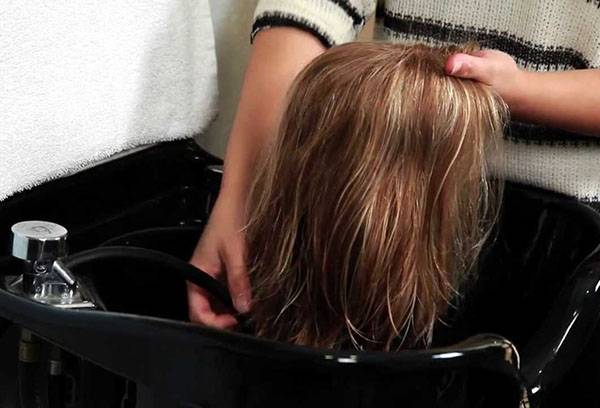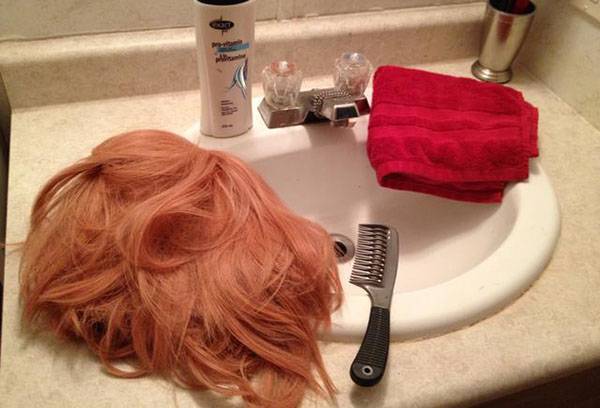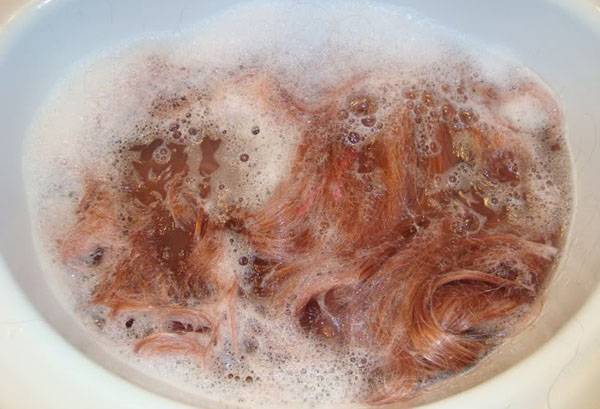How to wash and dry a wig made from human hair and Kanekalon at home
You should wash your synthetic hair wig as needed. Experts advise washing it no more than once every 45 days. The procedure requires compliance with a number of rules that will ensure the durability of the product.
Overlays are made from natural and artificial materials. Washing them is much more difficult than washing your hair and styling your hair. When caring for your wig at home, it is important to consider what material it is made of.

Natural or artificial?
A human hair extension looks very natural, which justifies its high cost. It is very difficult to recognize such a wig with the naked eye. Natural products are made from human hair, supplemented with horsetail hair, Tibetan goat or yak hair, as well as flax or hemp fibers.
Handmade overlays are considered the most valuable. The hairs are attached to a cap (monture) made of a special material in such a way as to replicate their natural growth. In addition to aesthetics, natural extensions have other advantages: they can be cut, curled and dyed with regular hair dye (but you cannot do these procedures frequently). This allows you to change your look without spending money.
Inexpensive overlays are made from artificial materials such as vinyl, polyamide, acrylic. The head sweats under them, which makes wearing them unbearable (especially in summer). This product feels hard and unnatural to the touch.It has an unnatural “doll-like” shine. The ends of your hair quickly become tangled and split. The strands are sewn in large pieces; manufacturers do not imitate the natural growth of hairs.
Kanekalon wigs belong to the group of artificial wigs, although this material is made from algae. The hair looks “alive” and elastic, the product has a natural look. It retains its shape well in humid weather, but is afraid of sudden temperature changes. Only a thermal fiber wig can withstand high temperatures.
Natural wig
Caring for a human hair wig is not much different from caring for your own hair. Cleaning can be done at home or entrusted to professionals. The product must be washed carefully, following a number of rules.
- Preparation. Before washing, you need to comb your curls. This is done extremely carefully. Use wide-tooth combs. Do not try to comb the curls: they need to be carefully smoothed out with your fingers.
- the washing up. Fill a basin with warm water. Wet the wig and lather with shampoo for split ends. The product should be washed carefully, without sudden movements. The most contaminated areas are the forehead, temples and back of the head. These areas need to be washed especially intensively.
- Rinse. Rinse off the shampoo with a gentle pressure of cold water from roots to ends.
- Air conditioner. The use of balm is necessary. It is applied to the ends to give the strands silkiness and elasticity. You need to wash off the balm in the same way as shampoo.
- Drying. The wig should be lightly wrung out with a towel. It cannot be rubbed or squeezed. Lay the strands on a dry towel and leave until completely dry. A hair dryer is practically harmless to hair, but can lead to deformation of the desired style.
You can do the styling at home yourself. You can use a hairdryer or curling iron (only on the ends). If you want to change your hairstyle, your wig should be worked on by a professional hairdresser.
Synthetics
The procedure for washing artificial wigs (acrylic, polyamide, vinyl) is not much different from caring for a natural product. Before washing the extension at home, comb the strands with a comb or detangle them with your hands. It is advisable to wash your wig in a bowl of warm water. Washing under the tap (under low pressure of warm water) is allowed. Synthetic hair is prone to tangling, so avoid sudden, rough movements.
After rinsing off the shampoo, apply a conditioner or mask for brittle hair. This will make further combing and styling easier. The use of hair dryers, irons, curling irons and drying near heat sources is strictly prohibited. Place the wrung-out wig on a jar or special stand and leave to dry completely at room temperature. At home it should be stored on a special or simulated holder.
Kanekalon and thermal fiber
To make Kanekalon strands look elastic and silky, you need to follow the rules of washing, drying and styling. It is better to wash such a product in boiled water with diluted shampoo for dry hair. Soak the wig for 10 minutes, then gently rub the monture and hair with your hands. The occipital, temporal and frontal areas need to be washed especially carefully. Rinse off the shampoo with cold running water.
Change the water in the basin. Add 2 tbsp. l. balm for dry or brittle hair. Leave the Kanekalon product in the solution with the balm for 20 minutes. Place the wet pad on a towel and squeeze lightly. Do not rub or wring the towel as this may pull out the strands and deform the wig.
Advice
Blow drying is only possible in cold air mode.
Thermal fiber wigs should be washed in the same way. The only exception is that styling at home after drying is permissible. Thermal fiber is resistant to high temperatures and is not affected by curling irons or straightening irons. However, it is better not to use a hair dryer for drying: there is a risk of damaging the attachment of the hair to the monture.
Tips and tricks
Our hair looks silky because it is nourished by the vitamins and minerals consumed by the body. Strands on extensions and hairpieces do not receive internal nutrition. They need to be washed only with high-quality products. It is allowed to use nourishing oils for the ends and periodically apply natural masks.
Before you wash your wig, make sure it is necessary. If you do not wear it daily, one wash every 3-4 months is enough. At home, the product should be stored on special holders so that the desired hairstyle does not become deformed.



